Designing a Dog Ownership Online Resource Center
Project overview
The Problem: Dog ownership can be difficult and quite stressful. A lot of research needs to be done just to be somewhat prepared when bringing home a dog. There are several dog forums with great information, but some may lack information in one area and some in another area. Jumping from site to site becomes time-consuming and tedious.
The Solution: The dog ownership website will provide enough information for at least a basic understanding of the responsibilities required of dog ownership. Extra information will be directly linked to minimize searching through search engines and becoming discouraged.
Tools: SurveyMonkey (surveying), Balsamiq (sitemapping and wireframes), and drawing.
Success Metrics
Goal: Help educate potential dog owners and existing dog owners about the basic responsibilities of owning a dog to increase the quality of life of both the dog(s) and dog owner(s).
Objectives:
- Provide training tips and videos on basic obedience, potty-training, and socialization.
- Provide information and resources on what to feed your dog and how to exercise your dog.
- Provide personal experiences, struggles, and what I've learned from my mistakes.
UX KPIs: Traffic to and throughout the website and which topics/articles receive the most views will track task success rate. How many times the search bar is used to find information instead of navigating through the website will track error rate.
Industry Research Findings
Using census data and researching dog-related topics, I found that owning pet companions, such as dogs, has been increasing over the last decade, encouraging related businesses to grow as well. Now owners are looking to better their pets' lives by purchasing all-natural, no by-products pet food, even the raw diet is catching on. Owners are purchasing pet insurance to cover veterinarian costs. Overall, owners are investing more in their dogs to guarantee a better life for their canine companions, requiring them to research which products are best.
Market Segmentation
Demographic Segmentation: the target market in this segmentation will predominantly be determined by income. Dogs cost money. Of course, some owners will spend more or less than other owners based on their dogs' needs and how much money they allocate to spend on their dogs. If you have an older dog that has health issues, it might be more cost effective to purchase pet insurance, which can be thousands of dollars a year. If you have a puppy, you might need to see the vet a few times in the first couple of months for shots; you might want to buy a couple of puppy classes to help socialize, and you might go through a lot of toys as they teeth. If you have a healthy adult dog, you might only spend your money on dog food, some toys and treats here and there, and annual veterinary trips to keep shots up to date. To own a dog, the owner must have an income that can support his/her current expenses, as well as the added expense of a dog.
Geographic Segmentation: the target market in this segmentation may depend on zip code or region. For example, some urban areas, such as San Francisco, are very dog-dominant. The dog population in San Francisco greatly outnumbers the number of children, according to SF Gate. Areas like San Francisco are a great regional market for dog-related products.
Psychographic Segmentation: the target market in this segmentation can be narrowed down based on interests, lifestyle, and attitude. Not only do you need to like dogs/have a general interest in dogs, your lifestyle also needs to be compatible with owning a dog. If you travel a lot for work, owning a dog isn't practical since you'd have to find someone to take care of your dog every time you leave town. Even if you like dogs and have a lifestyle that is compatible with owning a dog, you also need the right attitude to own a dog happily. Dogs can be very messy or bothersome at times. If you like your home very clean and hate it whenever someone makes a mess, you probably aren't looking to own a dog any time soon.
Behavioral Segmentation: the target market for this segmentation can be narrowed down based on products purchased or researched. As long as the products are dog-related and useful to the owner, there will be interest towards that product. For example, a dog owner is researching tough, long-lasting toys for his puppy and purchases a toy. Based on that purchase, the owner is probably also interested in other tough, long-lasting toys or other products that can solve his puppy's chewing habit.
Project Discovery
During the discovery phase, my research revealed that pet ownership is increasing, and dog owners are making strides to better their companions' lives. Each dog requires different care and fits into different lifestyles, but the basics overlap. Dog owners can agree that to increase their companion's quality of life, they need a wholesome diet, proper training and socialization, medical care when needed, and affection from the owner. I believe dog owners and potential dog owners have troubles with some or all of the basics listed above.
I can help them with an online information center that has the information needed or can direct the user to the proper resources. I'll know I'm right if the traffic to and throughout the website increases.
User Interviews
I interviewed four participants with varying backgrounds. Interviewee 1 was a potential dog owner, 27 year-old female, and living with her husband in an apartment. Interviewee 2 was a 28 year-old single male with a family dog, living in a house. Interviewee 3 was a current dog owner, 30 year-old male with a long-term girlfriend, and living together in their own house. Interviewee 4 was a potential dog owner, 26 year-old single male, and living in his own apartment.
Summary: Current/past dog owners researched at least a few topics, and potential dog owners plan to do extensive research before owning a dog. The topics researched differed based on how in-depth the owner wanted to learn about owning a dog and what kind of training to do with the dog.
Key Findings:
- People who would be most interested in the website are people who currently own dogs and wish to gain more knowledge and people who are looking to own a dog in the very near future.
- Current dog owners and potential dog owners have lifestyles that are compatible with adding an extra member. In other words, they are able to dedicate time to taking care of a dog and can pay for the added expense of a dog.
- People, who have owned dogs before or currently own one, have a good idea about which issues they wish to research more or seek help with.
- Not every dog owner (previous or current) did their research before owning a dog, but they did continue or begin researching after getting the dog, especially once they ran into issues.
Potential Solution: An online information center, providing information and resources, for dog owners, potential dog owners, and anyone who has an interest in dogs to improve the quality of life for both the owner and the canine companion and provide ample information for potential owners researching dog ownership.
Photos:
Interview 1 Potential dog owner
Interview 3 Current dog owner
User Surveys
Research Done Before Owning a Dog
I used SurveyMonkey to create my survey and received 25 responses. Based on my survey results, most dog owners own multiple dogs at a time and did at least minor research before owning one. And of the owners who currently own one, they owned several in the past. Very few owners spontaneously decided to own a dog. Most of their research was done online (websites, forums, etc.), and secondary research was done by talking to experienced dog owners, breeders, and vets. The online resources provided quite a bit of information, but there was a consensus that it'd be best supplemented with in-person interactions, such as talking to an experienced dog owner/breeder. Breed-specific information and personal experiences were the most lacking in these online resources, and owners were most unprepared for proper training (including proper socialization), health issues, and the time commitment for owning a dog. At least half of the surveyed owners still research training tips and health and diet advice even after owning a few dogs.
Competitive Analysis
After looking at a few breed-specific forums and other dog-related sites, the overall usability score (out of 100) was 77. The features and functionality were basic and worked. Some homepages didn't look like homepages, and I had to check the URL or select the homepage link to know that I was on the homepage. Other homepages were easily identified but not the most visually appealing. Navigation was clear and simple. The search bar was displayed on every page for easy access, but actually viewing the search results could be very confusing and distracting. On one site the top results were ads, so you had to scroll a little to see the actual search results, which were displayed visually unappealing. There were no issues with the controls, and the CTAs/registering for accounts was simple and clearly displayed. The appropriate error messages showed up when necessary and were easy to understand. A recurring issues I noticed is that these sites are very text heavy, and the images posted are formatted like they're from the late 1990s/early 2000s. Online help was minimal, consisting only of the "Contact us" form. I had no issues loading any pages or pages taking too long to load. Some sites were somewhat responsive but not done very well, definitely not mobile/tablet friendly.
Personas
The conducted interviews unveiled key insights and archetypes. I was able to use the archetypes and form them into personas.
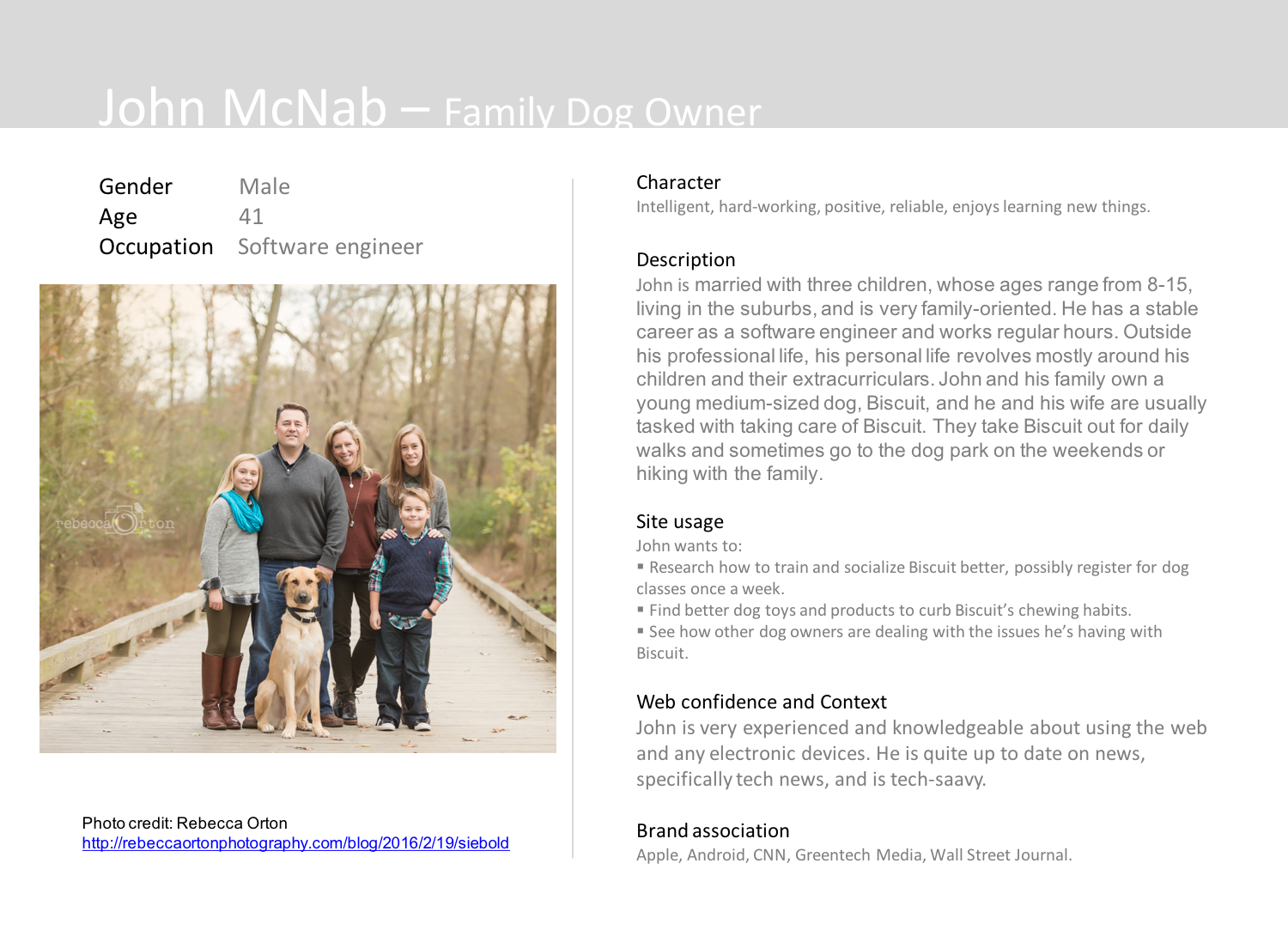
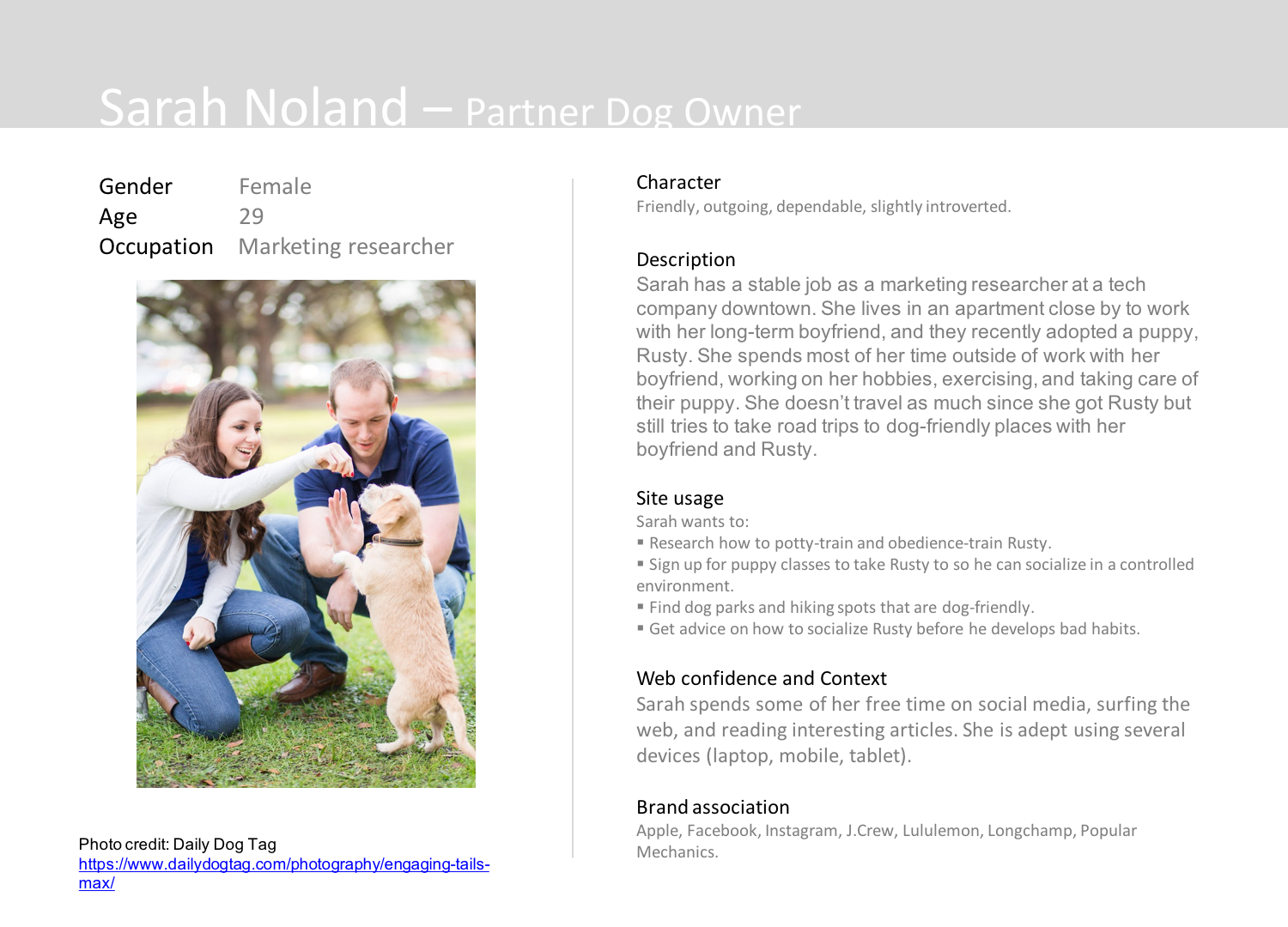
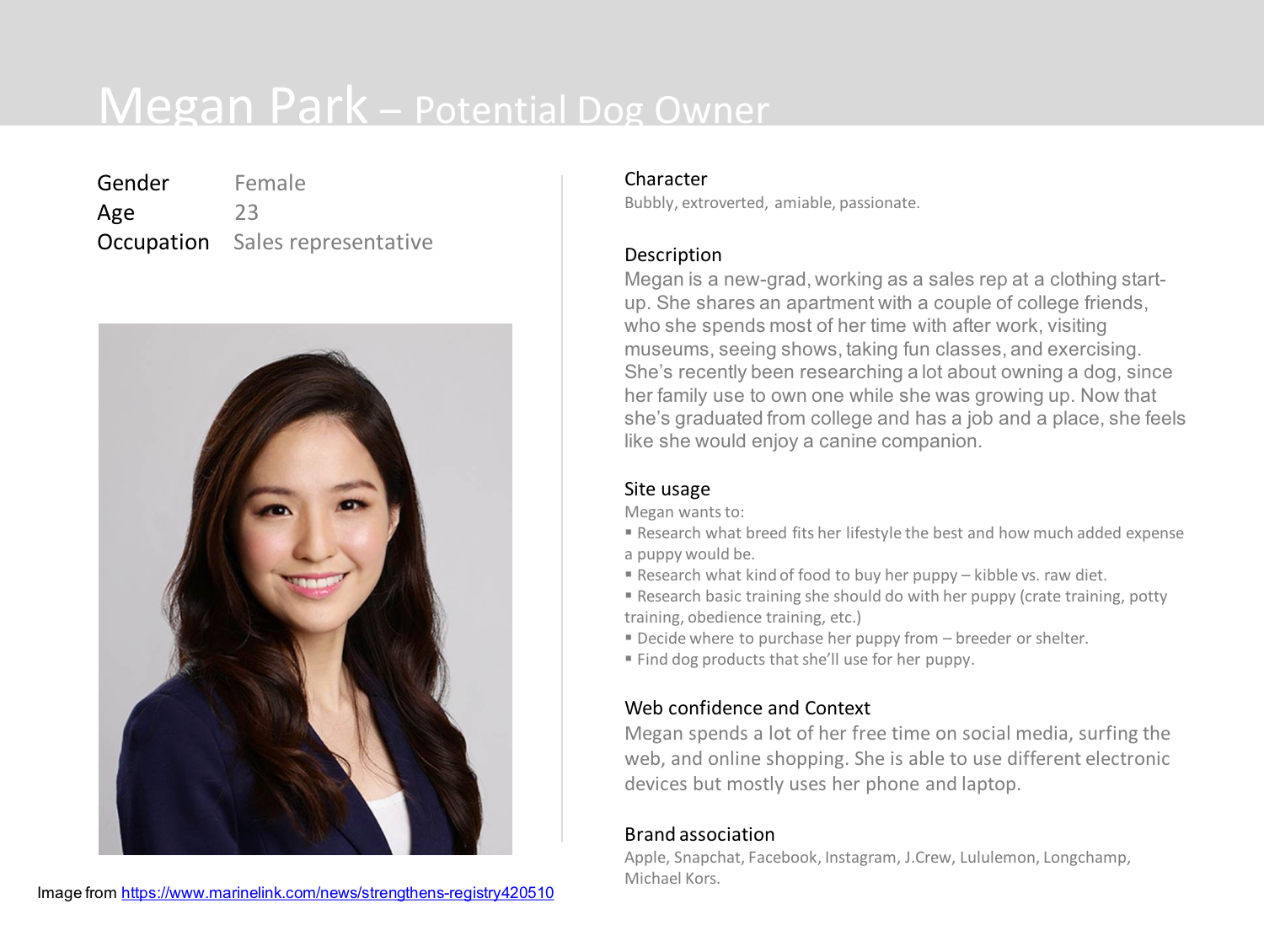
Sitemap
Once I received responses for my card sorting exercise, I created a sitemap for my website based on the card sorting results, personas, and their user journeys.
Sketches and Wireframes
Using the sitemap I created, I started to flesh out ideas by sketching and making wireframes in Balsamiq.
Sketches:
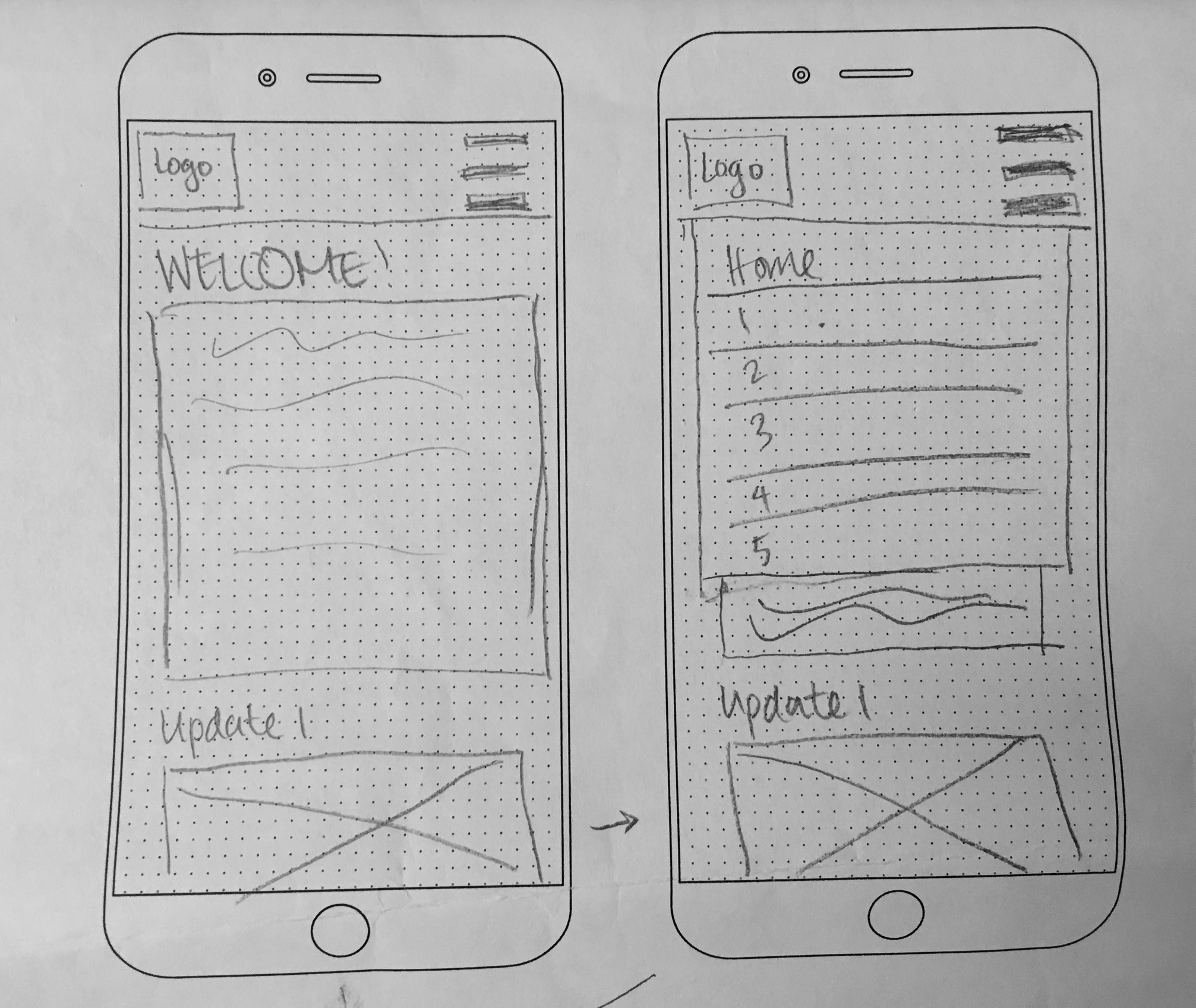


Desktop view:
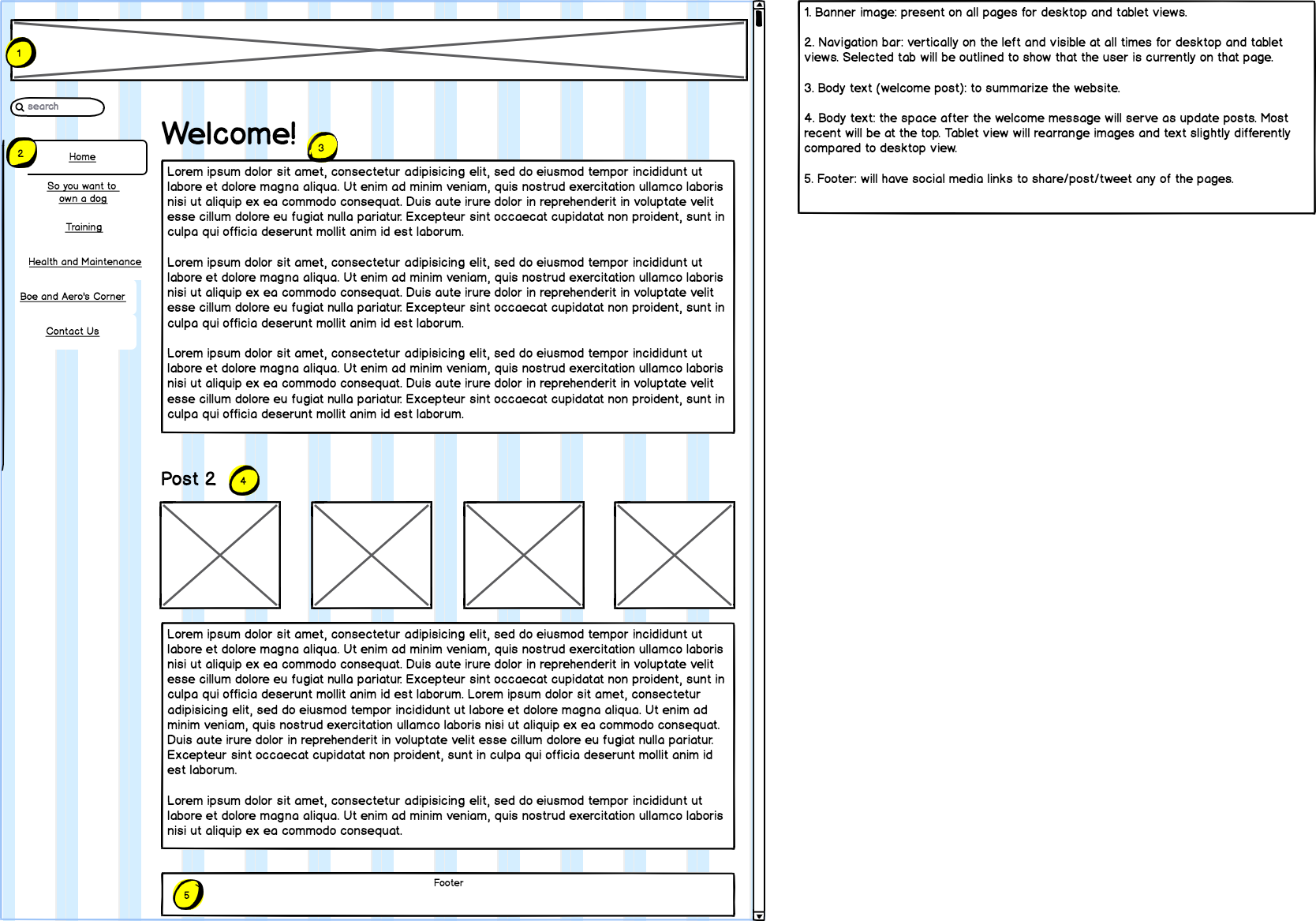
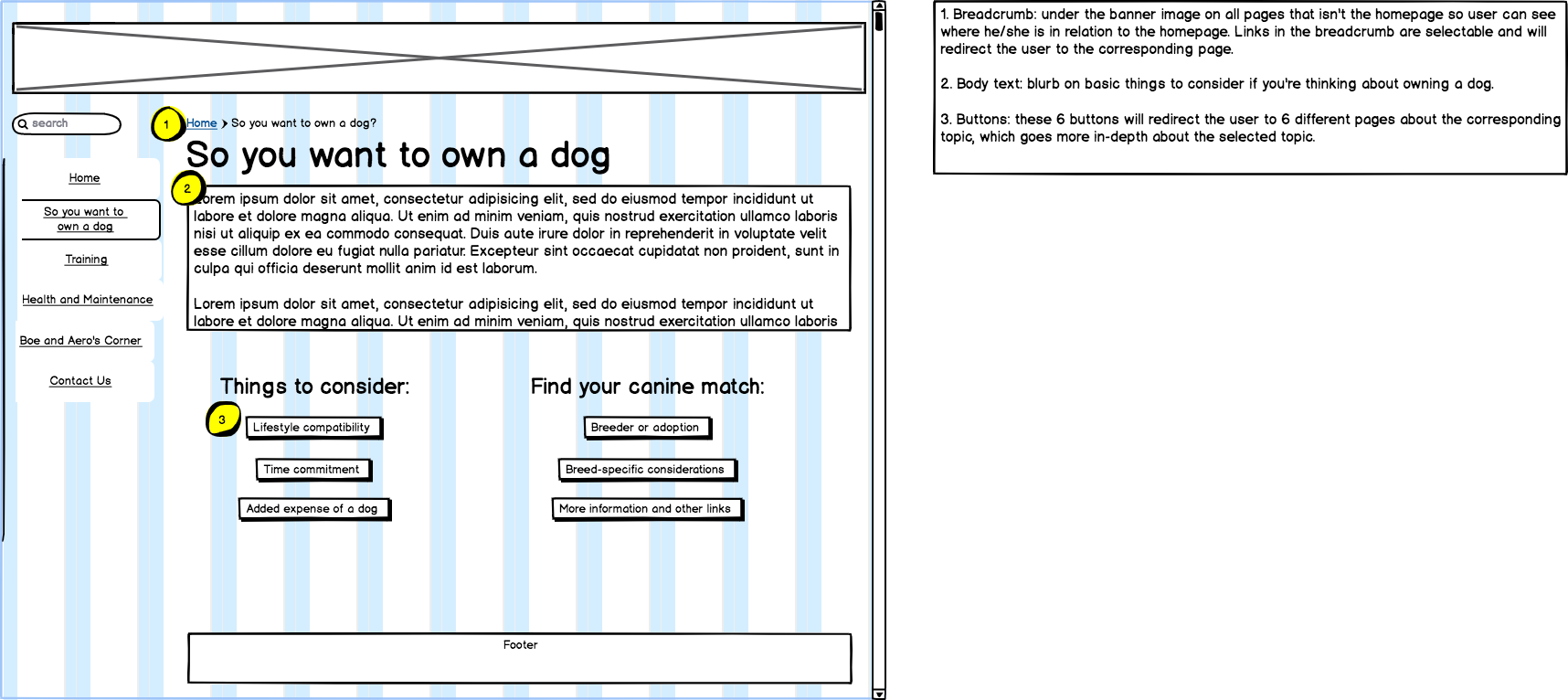
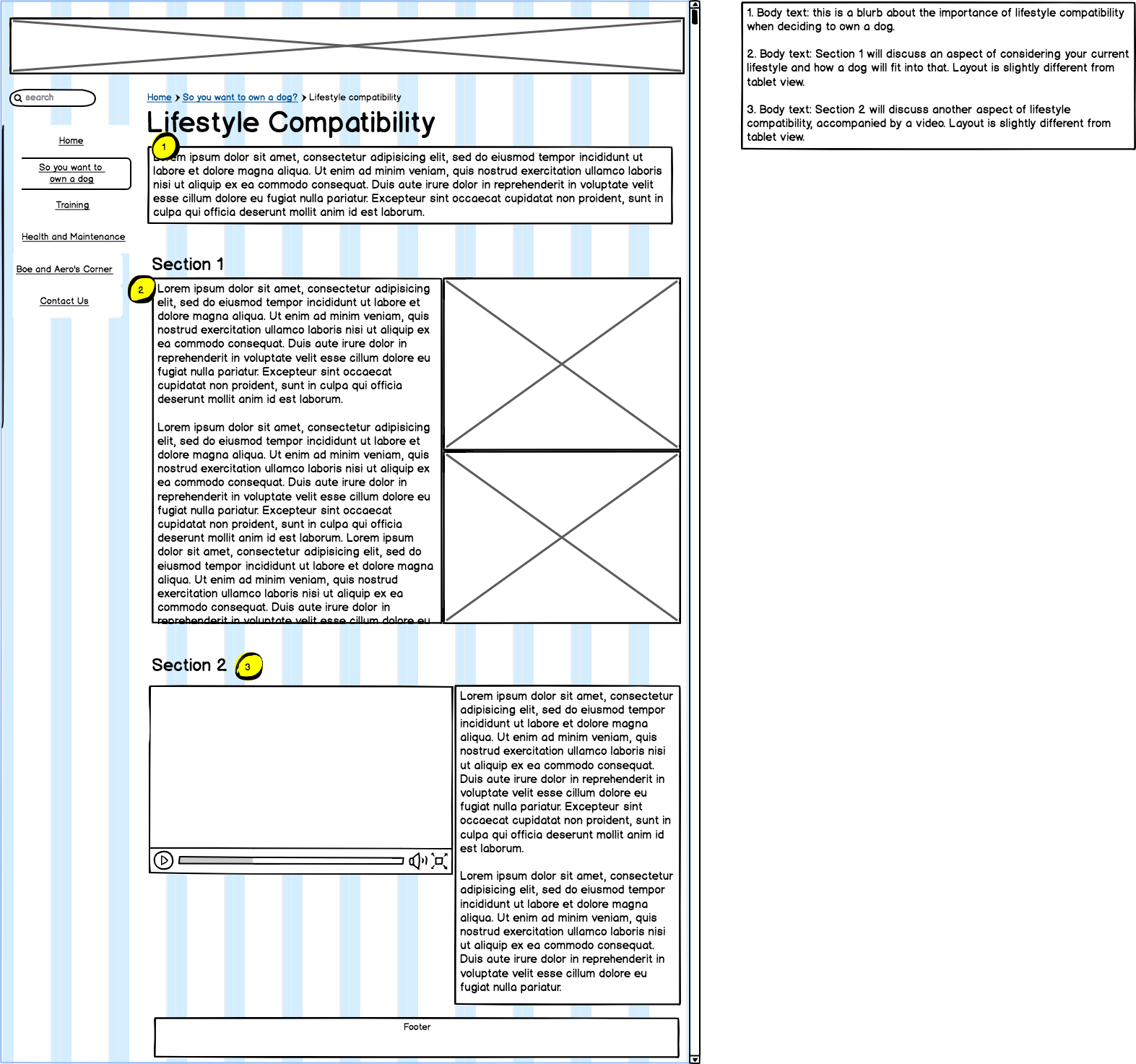
Tablet view:
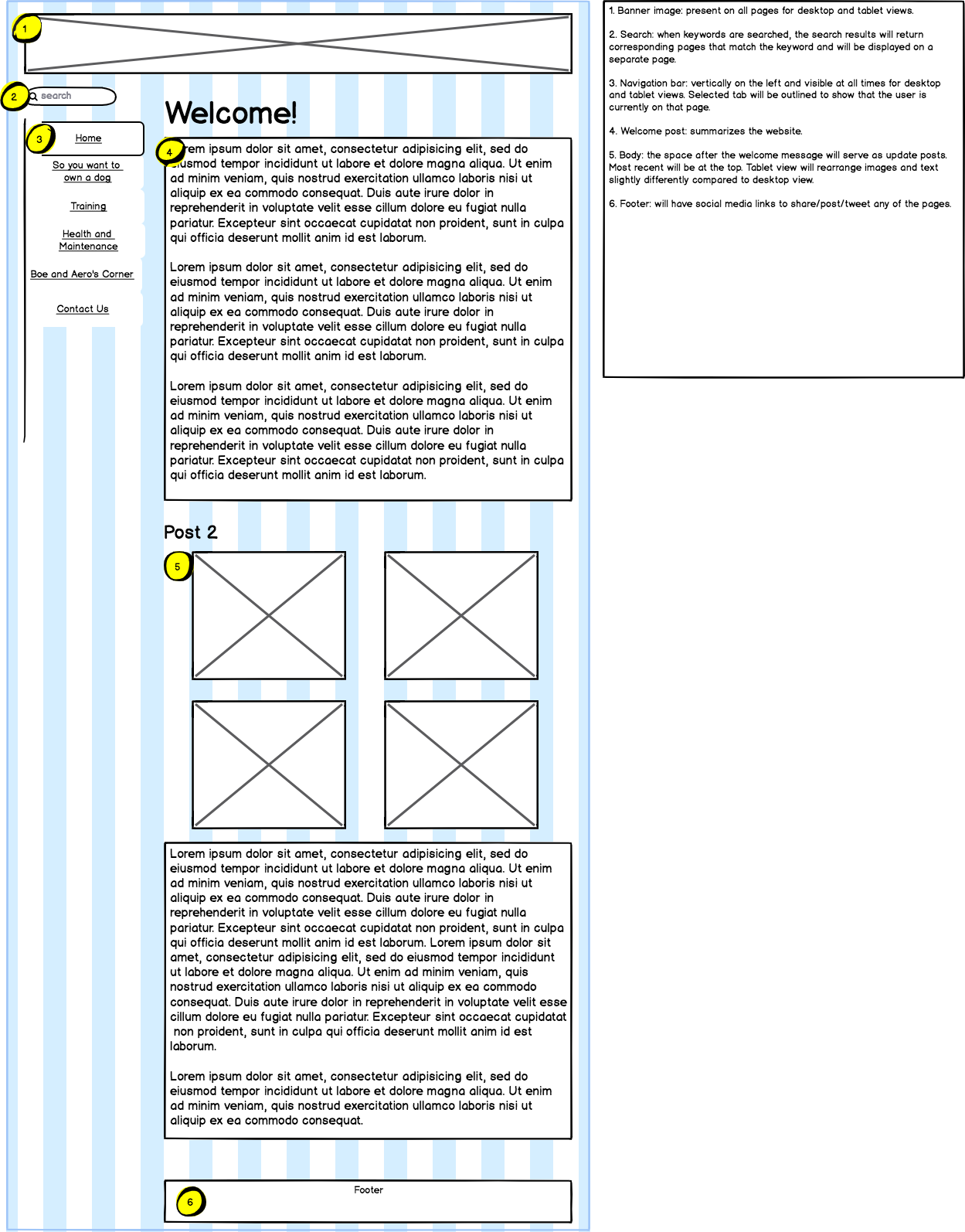
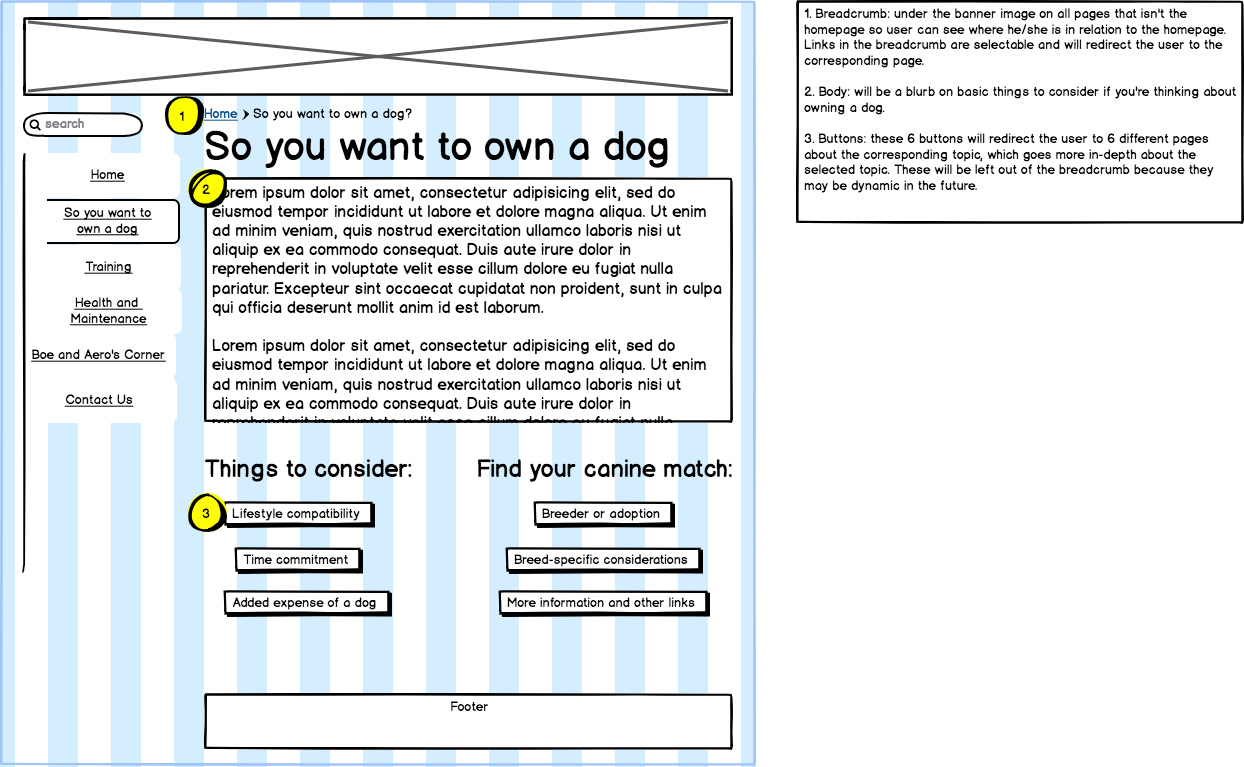

Mobile view:










